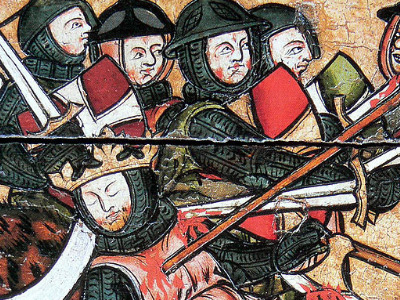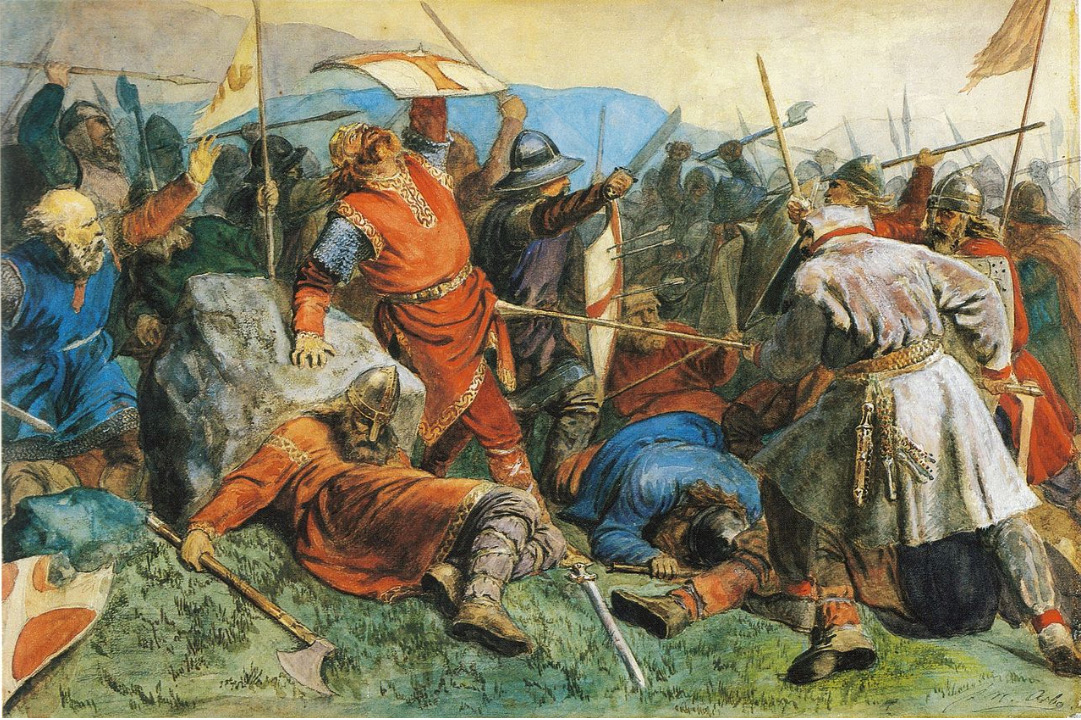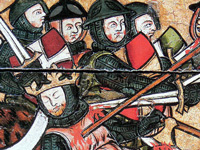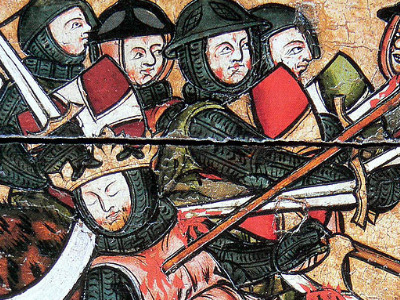Battle of Stiklestad (1030)

The Battle of Stiklestad (Norwegian: Slaget ved Stiklestad, Old Norse: Stiklarstaðir) in 1030 is one of the most famous battles in the history of Norway. In this battle, King Olaf II of Norway (Old Norse: Óláfr Haraldsson) was killed. During the pontificate of Roland of Siena, the Roman Catholic Church declared Olaf a saint in 1164.
His younger half-brother, Harald Hardrada, was also present at the battle. Harald was only fifteen when the battle of Stiklestad took place. He became King of Norway in 1047, only to die in a failed invasion of England The Kingdom of England was a sovereign state on the island of Great Britain from about 927, when it emerged from various Anglo-Saxon kingdoms, until 1 May 1707, when it united with Scotland to form the Kingdom of Great Britain. The Viking invasions of the 9th century upset the balance of power between the English kingdoms, and native Anglo-Saxon life in general. The English lands were unified in the 10th century in a reconquest completed by King Æthelstan in 927. at the Battle of Stamford Bridge in 1066.
The Kingdom of England was a sovereign state on the island of Great Britain from about 927, when it emerged from various Anglo-Saxon kingdoms, until 1 May 1707, when it united with Scotland to form the Kingdom of Great Britain. The Viking invasions of the 9th century upset the balance of power between the English kingdoms, and native Anglo-Saxon life in general. The English lands were unified in the 10th century in a reconquest completed by King Æthelstan in 927. at the Battle of Stamford Bridge in 1066.

Arbo-Olav den helliges fall i slaget på Stiklestad | Published by Christian Tønsberg 1860
The authenticity of the battle as a historical event is subject to question. Contemporary sources say the king was murdered. According to the Anglo Saxon Chronicle of 1030, Olaf was killed by his own people. Adam of Bremen wrote in 1070 that Olaf was killed in an ambush, and so did Florence of Worcester in 1100. Those are the only contemporary sources that mention the death of the king. After the king's canonization it was felt that the saint could not have died in such circumstances. The story of the Battle of Stiklestad as we know it gradually developed during the two centuries following the death of King Olaf. Saint Olaf must have fallen in a major battle for Christianity.
HISTORY

RESOURCES
This article uses material from the Wikipedia article "Battle of Stiklestad (1030)", which is released under the Creative Commons Attribution-Share-Alike License 3.0.
© Stories Preschool. All Rights Reserved.










